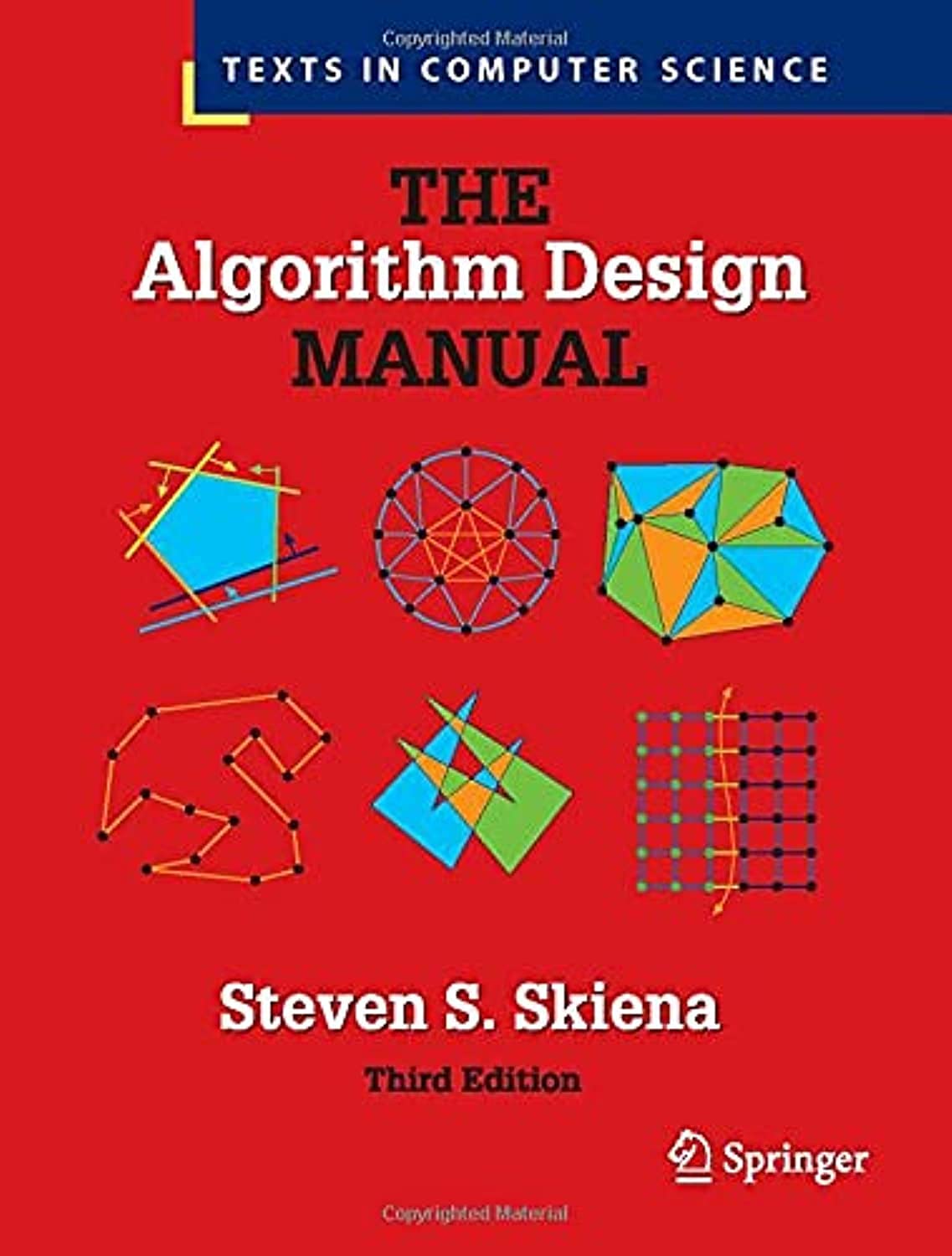About this deal
As an example, older calculators always started "high" when finding quadratic factors or square roots. Skiena (p. 134) shows that three possible "front ends" can make subsequent iteration (trial and error until you're done) faster and more efficient: 1. The older always start high method 2. A common bisection technique-- split the problem, then, by "divide and conquer" go higher or lower and 3. Use interpolation to get closer sooner, then iterate. This newly expanded and updated third edition of the best-selling classic continues to take the "mystery" out of designing algorithms, and analyzing their efficiency. It serves as the primary textbook of choice for algorithm design courses and interview self-study, while maintaining its status as the premier practical reference guide to algorithms for programmers, researchers, and students. This is a chapter you should read, and do a few problems for, but you don’t want to let this chapter kill your pacing. Most books on algorithms take a very formal, math heavy approach in which they present, analyze and prove things about a somewhat arbitrary collection of algorithms. There's usually no mention of real world applications.
I would give this book 4 1/2 stars; it has a fair share of typos, and sometimes problems are duplicated in different sections; this probably reflects how the book was updated. The book is rather lighter on proofs than, say Cormen/Leiserson/Rivest/etc., and so one should probably have a more rigorous book at hand to fill in some details when necessary. The choice of topics and the style reflect the author's extensive consulting experience, as well has his work on contest programming (he wrote another entire book dedicated to Programming Challenges). The fact that this book focuses on working source code in examples (as opposed to just pseudo-code) makes it extremely useful for drilling for programming interviews. Many algorithms are presented with actual code (written in C)-- Provides comprehensive references to both survey articles and the primary literature It is wonderful to open to a random spot and discover an interesting algorithm. This is the only textbook I felt compelled to bring with me out of my student days.... The color really adds a lot of energy to the new edition of the book!"
Use at your own risk. The author, Springer, and the State University of New York make no representations, express or implied, with respect to any software or documentation we describe. The authors, Springer, and the State University of New York shall in no event be liable for any indirect, incidental, or consequential damages. Contains a unique catalog identifying the 75 algorithmic problems that arise most often in practice, leading the reader down the right path to solve them
Steven Skiena’s Algorithm Design Manual retains its title as the best and most comprehensive practical algorithm guide to help identify and solve problems. … Every programmer should read this book, and anyone working in the field should keep it close to hand. … This is the best investment … a programmer or aspiring programmer can make." (Harold Thimbleby, Times Higher Education) New and expanded coverageof randomized algorithms, hashing, divide and conquer, approximation algorithms, and quantum computing I've read through the first half of the book, and am now at the catalog of algorithms that makes up the second half, and I've really enjoyed the book so far. IEEE Computer Science and Engineering Teaching Award and have been been teaching undergraduate algorithm This book, however, takes a different approach, and serves as a guide book for using algorithms in the real world. There's a heavy emphasis on formulating problems in terms of existing, solved problems. If you can "map" your problem to one with a known solution, then you can use the proven, existing solution to solve your problem. To emphasize that point, roughly the entire second half of the book is a catalog of known problems and solutions, with references to software libraries, books and other sources of information.Search(D, k): Given a search key k, return a pointer to the element in dictionary D whose key value is k, if one exists. Errata Solution Wiki Algorithm Repository Programs Lecture Notes Consulting Services Credits Second Edition
 Great Deal
Great Deal 